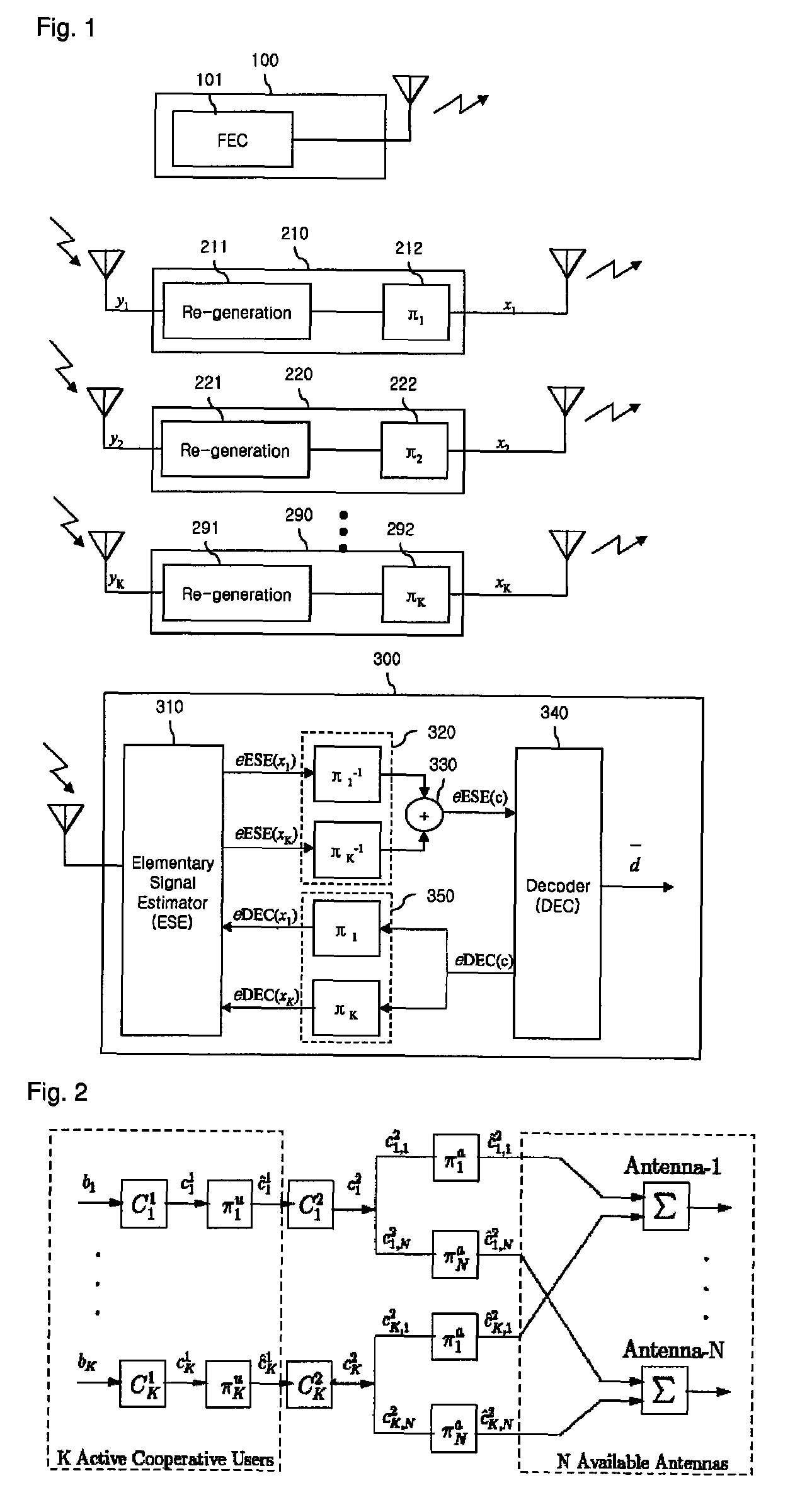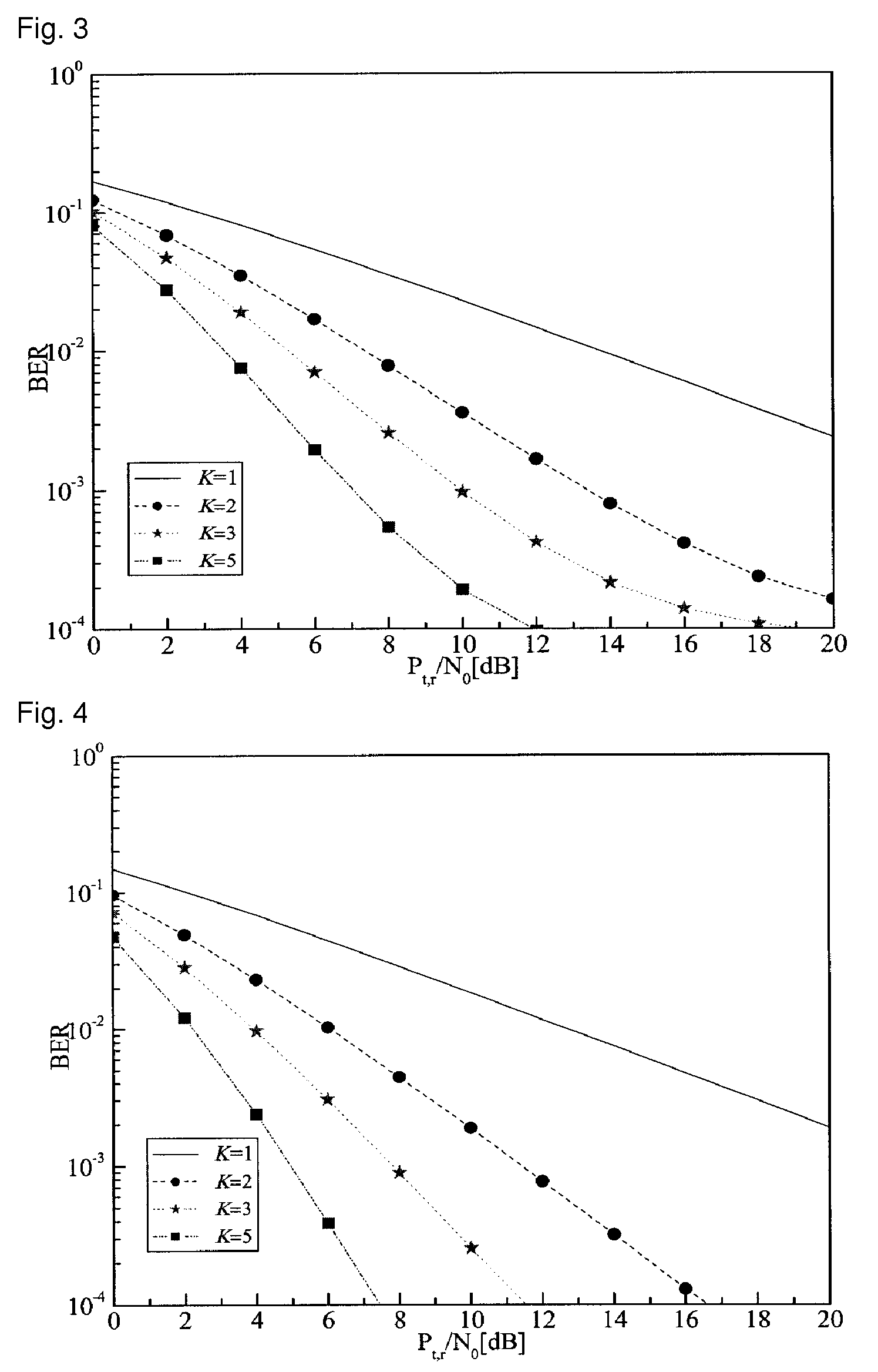Receiver for interleave division multiplexing cooperative diversity and power allocation algorithm thereof
a cooperative diversity and relay terminal technology, applied in the field of cooperative diversity schemes, can solve the problems of signal transmission overhead, inability to implement the mimo system in uplink, and increase the complexity of relay terminals, so as to reduce complexity and maintain frequency efficiency.
- Summary
- Abstract
- Description
- Claims
- Application Information
AI Technical Summary
Benefits of technology
Problems solved by technology
Method used
Image
Examples
Embodiment Construction
[0044]The present invention is applied to cooperative diversity. However, the present invention is not limited thereto and can be applicable to any communication system and method or other copyright-related system and methods to which the technical idea of the present invention can be applied.
[0045]The present invention may be embodied in many different forms and may have various embodiments, of which particular ones will be illustrated in drawings and will be described in detail. However, it should be understood that the following exemplifying description of the invention is not meant to restrict the invention to specific forms of the present invention but rather the present invention is meant to cover all modifications, similarities and alternatives which are included in the spirit and scope of the present invention. The terminology used herein is for the purpose of describing particular embodiments only and is not intended to be limiting of the invention. Unless otherwise defined...
PUM
 Login to View More
Login to View More Abstract
Description
Claims
Application Information
 Login to View More
Login to View More - R&D
- Intellectual Property
- Life Sciences
- Materials
- Tech Scout
- Unparalleled Data Quality
- Higher Quality Content
- 60% Fewer Hallucinations
Browse by: Latest US Patents, China's latest patents, Technical Efficacy Thesaurus, Application Domain, Technology Topic, Popular Technical Reports.
© 2025 PatSnap. All rights reserved.Legal|Privacy policy|Modern Slavery Act Transparency Statement|Sitemap|About US| Contact US: help@patsnap.com



